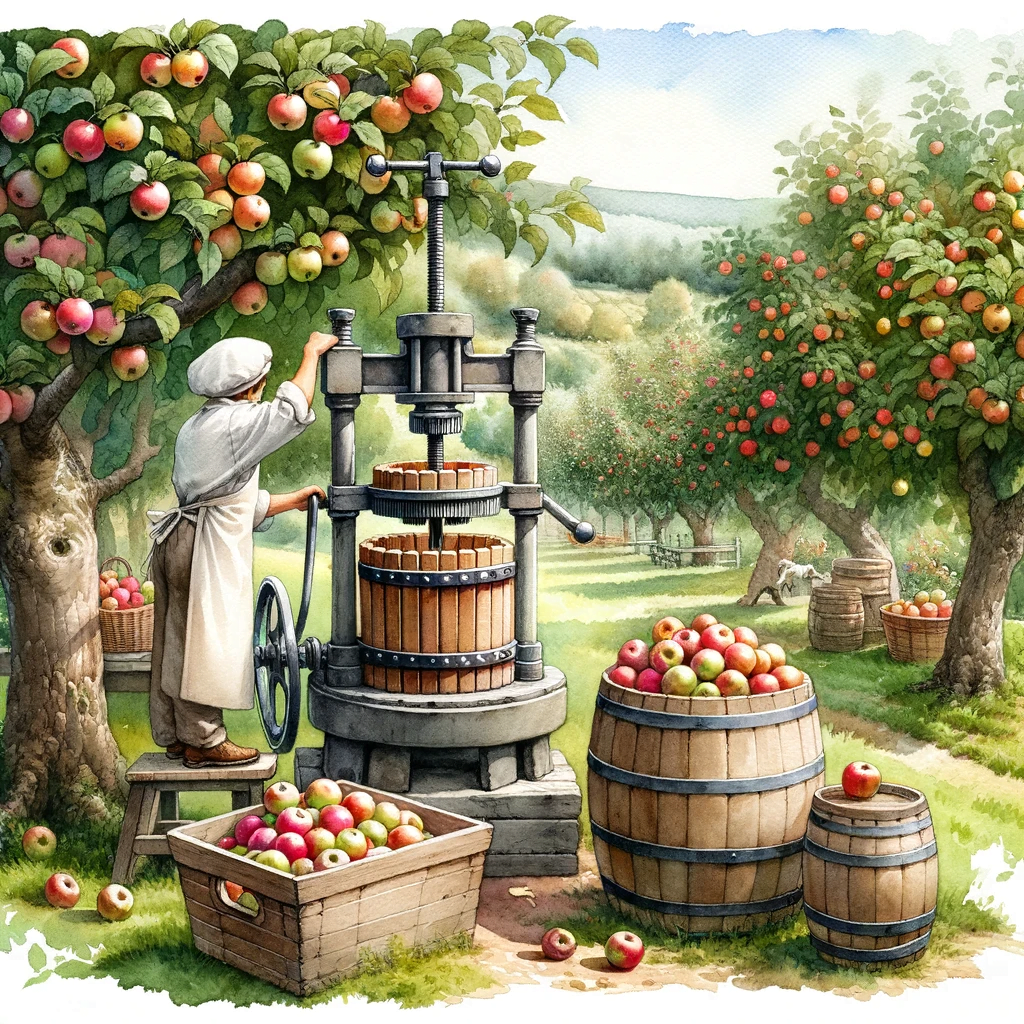Opal Apples, a delightful fruit known for its distinct golden appearance, have been gaining popularity in recent years. With their crisp texture and sweet, tangy flavor, Opal Apples offer a refreshing twist to traditional apple varieties. Rich in antioxidants and packed with essential vitamins and minerals, these apples make for a healthy and delicious snack option. In this article, we will explore the origin, characteristics, and benefits of Opal Apples, shedding light on why they have become a favorite among fruit enthusiasts. Whether you are a health-conscious individual or simply appreciate a tasty snack, read on to discover the wonders of Opal Apples.
What Are Opal Apples
Opal apples are a unique variety of apple that have gained popularity in recent years for their exceptional taste, distinct appearance, and nutritional value. These apples are a cross between Golden Delicious and Topaz apple varieties, resulting in a crisp, sweet, and tangy flavor profile. With a vibrant yellow skin and a hint of orange blush, Opal apples are not only visually stunning but also offer a delightful eating experience. In this article, we will explore the appearance, origin, taste, nutritional value, unique characteristics, growing conditions, availability, popular uses, storage tips, and a comparison to other apple varieties of Opal apples.
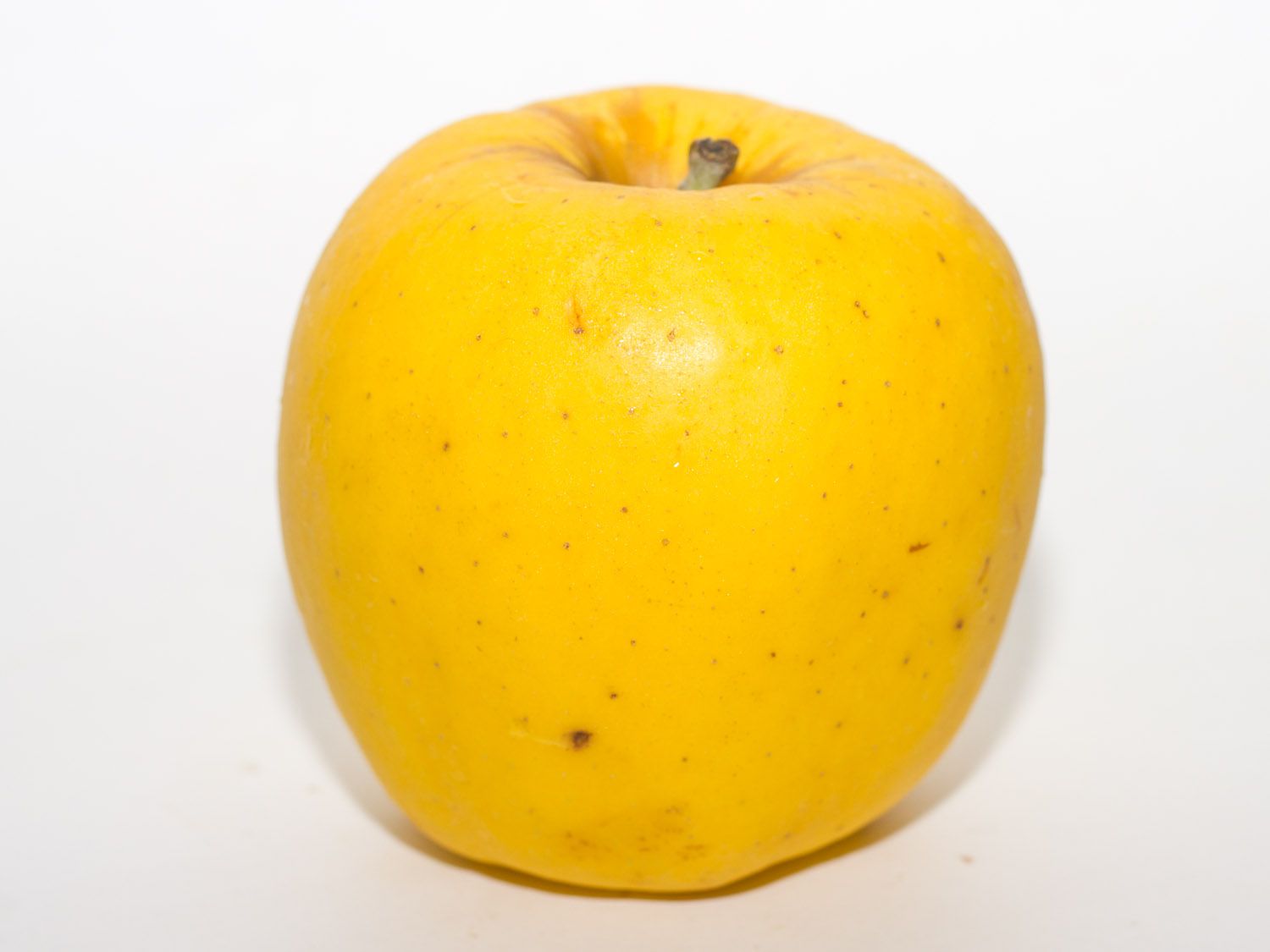
Appearance
Opal apples are instantly recognizable due to their stunning appearance. They feature a smooth, glossy yellow skin with a slight orange blush on one side. Their shape is typically round, and their size can range from medium to large. The skin is thin, making it easy to bite into and enjoy the juicy flesh inside. The flesh of Opal apples is a creamy white color, and when cut, it has a slow browning rate, making it perfect for salads or other dishes where apple slices are exposed.
Origin
Opal apples were first bred in the Czech Republic by crossing Golden Delicious and Topaz apple varieties. The idea was to develop an apple that offered the best qualities of each parent, resulting in a unique and flavorful variety. After years of careful cultivation and selection, the Opal apple was officially introduced to the market in the United States and Europe in the early 2000s. Since then, it has gained widespread popularity and recognition for its exceptional taste and aesthetic appeal.
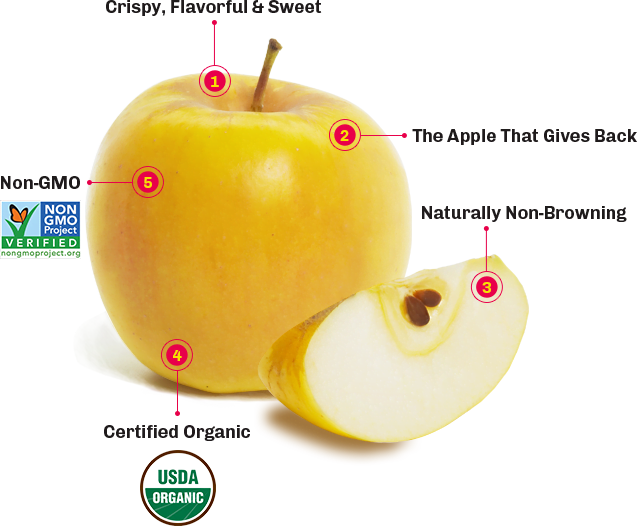
Taste
One of the key reasons for the rise in popularity of Opal apples is their exceptional taste. The flavor profile of Opal apples can be described as a delightful combination of sweet and tangy. They offer a crisp texture and a refreshing juiciness that is incredibly satisfying to bite into. The sweetness of Opal apples is similar to that of Golden Delicious apples, while their tanginess is reminiscent of the Topaz variety. This unique combination makes Opal apples a favorite among apple enthusiasts who seek a harmonious balance of flavors.
Nutritional Value
Opal apples are not only delicious but also packed with nutritional benefits. They are an excellent source of dietary fiber, which aids in digestion and promotes overall gut health. These apples are also rich in antioxidants, which help fight free radicals and reduce the risk of chronic diseases. Additionally, Opal apples provide essential vitamins and minerals such as vitamin C, vitamin A, and potassium, supporting a healthy immune system, vision, and heart health.
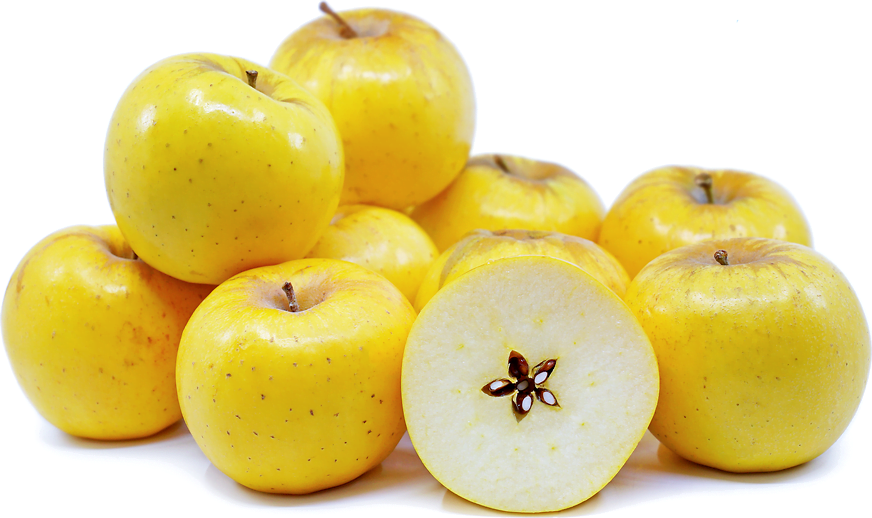
Unique Characteristics
Opal apples possess several unique characteristics that set them apart from other apple varieties. One standout feature is their resistance to browning when cut. This makes Opal apples an excellent choice for salads, fruit platters, and other dishes where the apples need to retain their fresh appearance. Additionally, Opal apples have a longer shelf life compared to some other apple varieties, allowing you to enjoy their deliciousness for an extended period.
Growing Conditions
Opal apples thrive in temperate climates and are primarily grown in select regions around the world. These regions include parts of Europe, such as the Czech Republic and France, as well as certain areas in North America. The apple trees require well-drained soil and full sun to produce the best quality fruits. They are known for being relatively low maintenance and have good resistance to common diseases and pests.
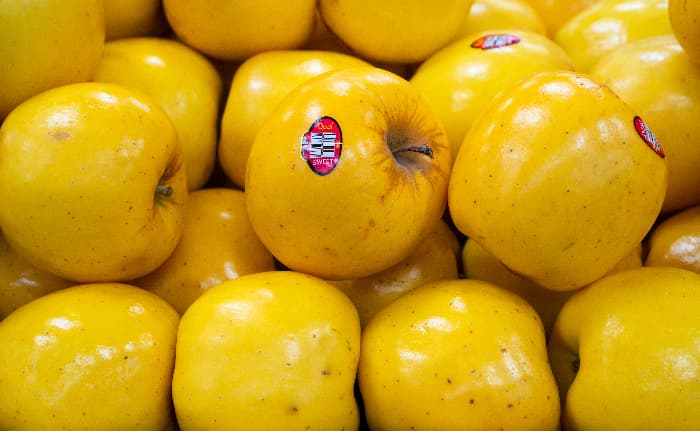
Availability
Opal apples are predominantly available during the late summer and fall months, typically from August to November. However, with advances in cold storage technology, these apples can now be enjoyed year-round in many locations. It is essential to check with local grocers or farmers’ markets to determine the availability of Opal apples in your area.
Popular Uses
Opal apples are versatile and can be used in a variety of culinary creations. Their sweet yet tangy flavor pairs well with both savory and sweet dishes. Some popular uses for Opal apples include:
Fresh Snacking: Enjoy Opal apples on their own for a crisp and refreshing snack.
Salads: Add thinly sliced Opal apples to salads for a burst of flavor and a unique, vibrant touch.
Baking: Opal apples are perfect for apple pies, tarts, and crumbles, as their texture holds up well during baking.
Sauces and Chutneys: Create delicious sauces or chutneys by cooking Opal apples down with spices and other ingredients.
Juices and Smoothies: Blend Opal apples with other fruits for a naturally sweet and nutritious beverage.
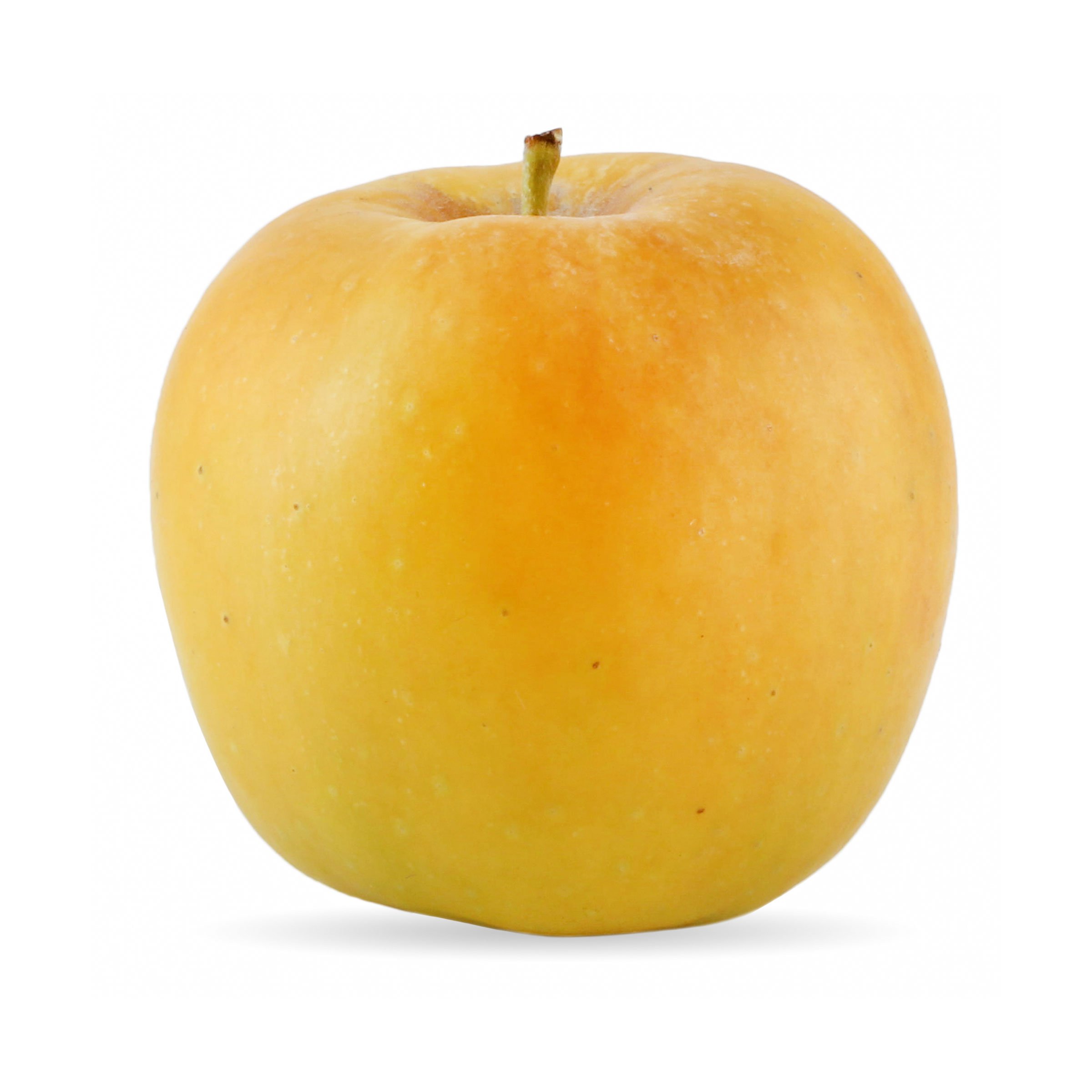
Storage Tips
To maximize the lifespan of Opal apples, it is crucial to store them properly. Place them in a cool, dry place away from direct sunlight. Opal apples can also be stored in the refrigerator, where they can stay fresh for several weeks. To prevent them from shriveling, store them in perforated plastic bags to maintain proper airflow while preventing moisture loss.
Comparison to Other Apple Varieties
Opal apples offer a distinct flavor and appearance that sets them apart from other apple varieties. When compared to Golden Delicious, Opal apples have a tangier and more complex taste profile due to their Topaz parentage. They also have a thinner skin and a creamier flesh, which adds to their culinary versatility. In terms of appearance, Opal apples’ vibrant yellow color with an orange blush distinguishes them from the green or red hues commonly found in other apple varieties. Furthermore, Opal apples’ resistance to browning when cut gives them an advantage in salads and fresh preparations.
In conclusion, Opal apples are an exquisite variety of apple that delights the senses with their appearance, taste, and nutritional value. Their smooth golden skin, sweet and tangy flesh, and unique characteristics make them a sought-after choice among apple lovers. Whether enjoyed fresh, baked, or incorporated into various dishes, Opal apples bring a touch of vibrancy and flavor to every meal. With proper storage and availability throughout the year, these apples offer a year-round opportunity to elevate your culinary experiences.


